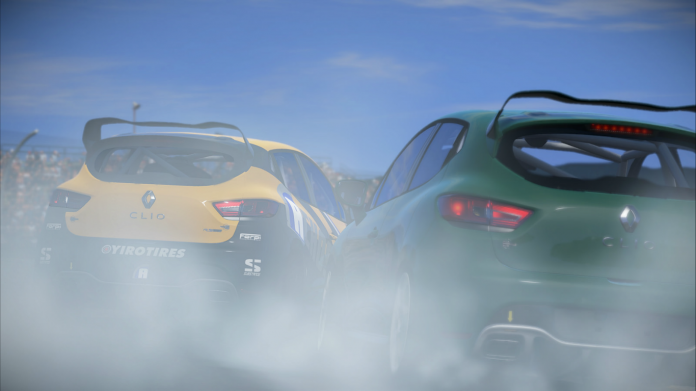Last month UK-based developer Slightly Mad Studios released a new update for its popular racing title, Project CARS. A big part of the patch was devoted to the Oculus Rift virtual reality (VR) head-mounted display (HMD) and improving the videogame’s support for it. Along with updating support to the Oculus VR software development kit (SDK) 0.7, the patch also updated the HUD and Menu among other aspects. Today the developer is releasing another major update that improves that VR support further still.
As described over on the title’s official forums, Project CARS update 6.0 serves to primarily improve the HUD position/rotation/scaling editor and the custom VR settings system. A full changelog of updates can be found over on the forums but the VR-specific updates are listed below.
Slightly Made Studios has already confirmed that it’s working on Project CARS 2, though hasn’t yet mentioned if it too could support VR. The original Project CARS is also expected to support the PlayStation VR HMD later down the line. VRFocus will continue to follow Project CARS closely, reporting back with any further updates on it.
VR Updates:
* All movement and rotation is now relative to the HUD’s local axis instead of world axis.
* The HUD controls are now all located on the numeric keypad. Toggling between position and rotation modes are done by pressing the NUM-0 key.
* HUD movement speeds are now reduced and we added controls for slow scale control. The movement speed will now also accelerate if you press and hold a key, limited to maximum 10x speed.
* The movement amount per click of the HUD editing controls for placement and rotation are now scaled when you scale the HUD size up or down. This helps a lot as it gives much finer controls when positioning/rotating while the HUD is scaled down.
* Changes to the HUD position/rotation/scale will now only be saved when you confirm to save the edited HUD settings; otherwise it restores the previous settings.
New and improved Oculus HUD movement keys layout
The HUD adjustment now runs in one of two modes – movement and rotation / scale. Num-Pad 0 toggles between these modes.
In movement mode the controls are as follows (numpad)
4 & 6: move left and right
1 & 3: move left and right slowly
8 & 2: move up and down
7 & 9: move up and down slowly
+ & -: move back and forth
/ & *: move back and forth slowly
5: resets position to the default
In rotation / scale mode the controls are as follows (numpad)
4 & 6: rotate left and right
8 & 2: rotate up and down
1 & 3: rotate anti-clockwise / clockwise
+ & -: scale the HUD bigger and smaller
/ & *: scale the HUD bigger and smaller slowly
5: resets rotation and scale to the default
Custom VR settings system
This file is located in your ‘My DocumentsProject CARS’ folder, and is called ‘oculussettings.xml’
There are entries to control the position, rotation and scale for each of the following:
* HUD (HUDSettings)
* Main Menus (FrontEndSettings)
* In-game Menus (InGameSettings)
The format for each is identical and the data can be copied between them. While we currently only allow you to edit the HUD in-game using the system documented above, you can freely copy the saved values to the entries for the front-end and in-game menus settings, and these will then also appear at the repositioned placement/rotation/scale settings.
FYI – the rotation part is a quaternion, if anyone wants to try and make sense of it (the names are intuitive, offsetX offsetY, offsetZ, scale, and rotation[WXYZ]).
The other 3 entries are:
* FullScreen – sets the full screen mirror mode. Default is ‘true’. Set to ‘false’ to disable full screen mirror mode.
* HideCrowds – used to hide crowds (performance gain). Default is ‘true’. Set to ‘false’ to enable crowds again.
* LimitCars – not yet used, future addition
-END-
The post New Project CARS Patch Boasts Big Updates for Oculus Rift appeared first on VRFocus.















